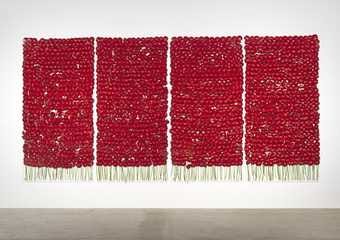
Of all the forms of socially sanctioned fantasy-building in our world, weddings are an interesting one. It is fascinating to watch otherwise normal people engage in expensive acts of narrative and image construction, at a level of unapologetic self-obsession1 that’s usually seen only in Instagram influencers and crazies who write about themselves on the internet.
Imposing castles, idyllic countryside barns, grand estates formerly owned by barons: when choosing the backdrop for a making a promise that will define our lives, we have a collective penchant for doing it in settings, clothes, and circumstances that will look nothing like it. Wedding venues tend to be functionally and architecturally divorced from our every day lives. Perhaps we worry that the act will betray its own absurdity if performed in a space that is too adjacent to the familiar. Stand too close to the nitty-gritty of reality, and you may just decide to call the whole thing off. I have to live with your inability to get dirty socks into the hamper…for the rest of my life? Nah, better not.
There’s a certain detachedness from reality that seems to characterize romantic things in general. We need the gesture or experience to be wasteful, excessive, and completely unsustainable in order for it to count at all. De Beers is coping with lab-grown diamonds by selling the idea that they are too affordable to function as a declaration of love. This simultaneously admits that diamonds hold no inherent value, while arguing that commitment should be measured by the magnitude of a sacrifice that makes no practical sense.2
In January of 2024 I saw an installation at the Tate Britain called ‘preserve’ beauty by Anya Gallacio. It was a wall of gerbera flowers, pressed behind panes of glass without preservatives and simply…left there, for months. They must have been beautiful at the time of installation. By the time I visited, they had begun to wither, mold, rot, smell, and drip onto the floor:

I liked how this piece highlighted the ways in which we keep romanticism and reality segregated. The artist did not do this by being cynical. She did not point at a beautiful thing (flowers) and say “look how fake and stupid this is”.3 She simply placed that beautiful thing on the wall, and left it there to do what it would. Cut flowers die and rot. Most of us just bin them after Valentine’s Day, so that we don’t have to watch them doing so.
We will cultivate life at industrial scale, pump it full of growth hormones, fertilizers, and insecticides, cut it down at the prime of life, wrap it in plastic, and quickly hand it to another human for consumption before it has time to disintegrate. We do this in the name of love.4
Are we sure that we really understand what the word means?
#151
It’s as if society has said to women: hey, there are two times in your life when you’re allowed to yell “look at me!”, and people have to politely indulge you. Once when you get married, and once when you have kids. Why else has an entire industry arisen to sell accessories for something that you’re only supposed to do once in your life? You’d think the market would be limited. Dying is also a once-in-a-lifetime event where everyone pays attention to you, but I don’t see any magazines about the latest trends in coffin shapes.
By this logic, we could start proposing to each other by drawing 30% of our blood volume and dumping it all over the floor. Forget a new car or a down payment on a house: I could have saved lives with this, but I spent it on you instead. Surely that qualifies as a sufficiently natural and expensive gesture, even by De Beer’s standards.
You have to be very careful when being cynical about romance these days. Elaborate intellectual acrobatics do tend to give away the fact that actually, you were the common denominator in all of your failed relationships
A slaughterhouse is barn and farm-adjacent, but people would think I was psychotic if I wanted to host a wedding in one




